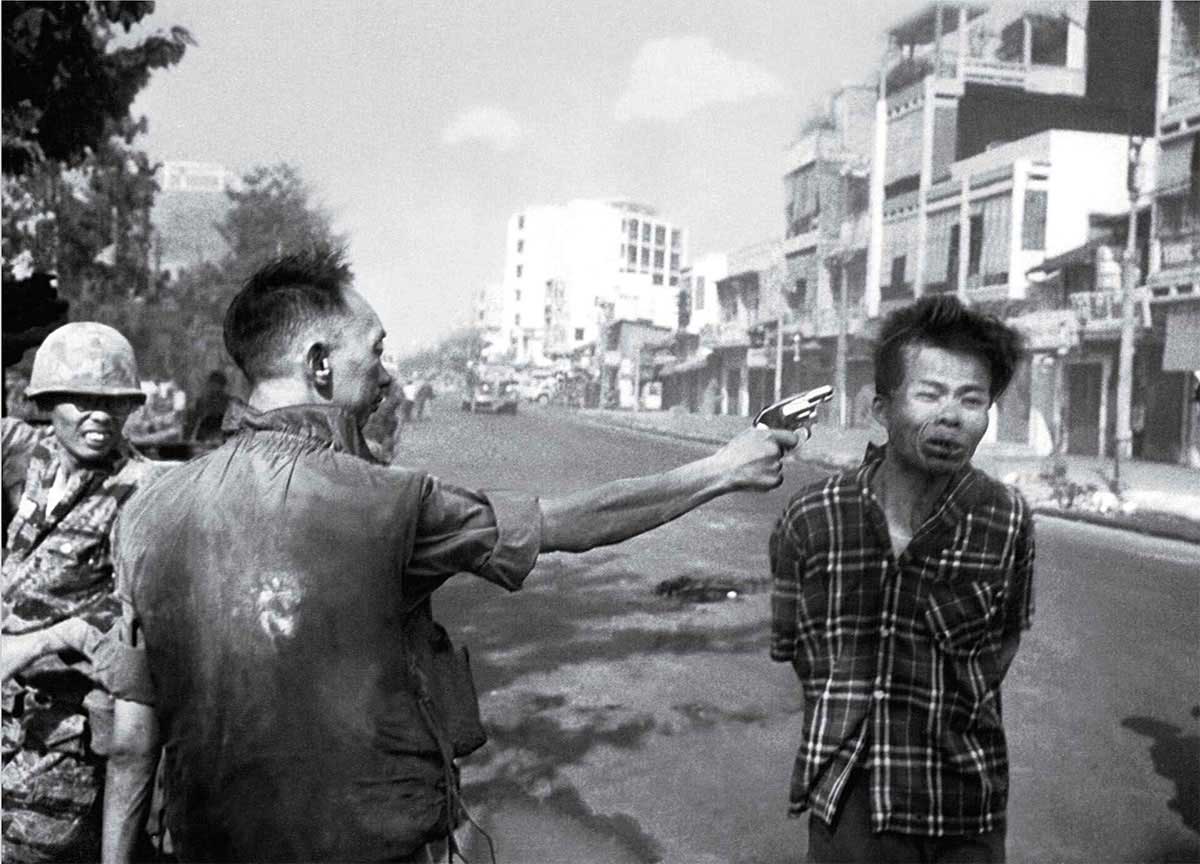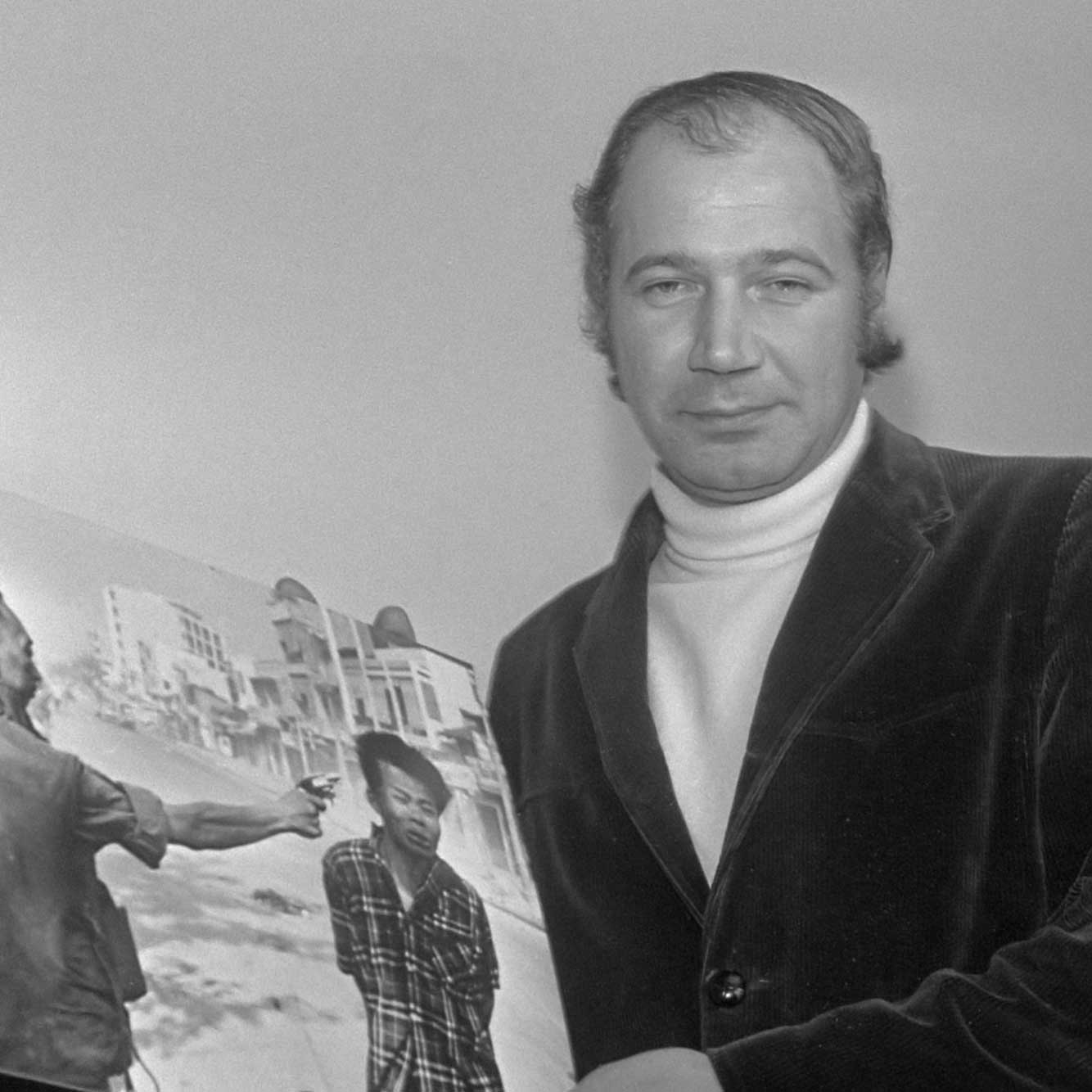Saigon Execution ; We are facing one of the most shocking photographs of the last century; one of the most iconic and legendary representations of the cruelty of war conflicts.
A conflict that should have been a Civil War without any international intervention, was coupled with the growing tension between the Soviet Union and the United States.

Each side of a divided Vietnam, on one hand, the Republic of Vietnam with the support of the United States and other allied nations and on the other, the National Liberation Front of Vietnam (Viet Cong) and the army of the Democratic Republic of Vietnam with the support of the Soviet Union and China, positioned themselves in favor of the regime with which they shared ideology, causing the Vietnamese civil war to end up becoming one of the most bloodthirsty and mediatic conflicts of the twentieth century, extending over almost 20 years.
The end result was devastating: it is estimated that millions of people died. As in all wars, there are hundreds of snapshots that reflected the barbarism of what happened. However, one was to become the symbol of those days.
The famous image that Eddie Adams, who was present in 13 wars, took out on February 1, 1968, earned him among others the Pulitzer Prize. That day, the dreaded Chief of the South Vietnamese police, General Nguyen Ngọc Loan, shot Nguyen Van Lem in the head and in the middle of a street in Saigon.

This image went around the world to show the cruelty of war, and the low value that life could have in certain conflicts. But what not everyone knew was the reality behind the photograph. A reality that Adams would make known over the years.
Nguyen Van Lem, the executed, was not just any citizen, but an active member of the Vietcong known as Captain Lop. That same day, Lem had led a death squad that had gone deep into Saigon to kill the high command of the South Vietnamese regime, a list that included General Loan among others.
The death squad’s mission was successful to a certain extent: they succeeded in their mission and killed several police officers at gunpoint, as well as the families of some of the top officials. This attack was later known in history as «the Tet offensive”. Soon after, Loan succeeded in capturing him, and a few minutes later this photograph was taken, at the moment when Loan took revenge.
This image became iconic because it represented everything that went wrong in Vietnam. The US military was not able to control their South Vietnamese allies, who were as bloodthirsty as their enemy, North Vietnam. A complex political situation contained in a photo with an executioner and a victim.
Pacifist movements took the image as a representation of the brutality of a senseless war, as a weapon thrown against the government. The fact that the execution of a prisoner of war took place without trial and investigation stimulated the movement against war throughout the world and was actively used by communist propaganda. It is said that this, and the many similar images that came from Vietnam, made Lyndon Johnson fail to remain for two legislatures.
Some of those who met General Loan claimed that the execution of the prisoner would never have been carried out if journalists and photographers had not been there at that time. Loan insisted that his action was justified by linking the prisoner with the Viet Cong.
After the worldwide diffusion of the photo, Associated Press (for whom Adams worked) sent him to accompany Loan, which made him change his mind about the General. Loan ended up moving to the United States after the conflict, but he was always a victim of that image and was not very successful in the business he undertook, since he was always related to that fateful moment.
After the general’s death from cancer in 1998, at 67, Adams wrote about him in Time magazine. The journalist declared: “I won a Pulitzer Prize in 1969 for a photograph of one man shooting another. Two people died in that photograph: the recipient of the bullet and GENERAL NGUYEN NGOC LOAN. The general killed the Viet Cong; I killed the general with my camera.”
He also added: «Still, photographs are the most powerful weapon in the world. People believe them, but photographs do lie, even without manipulation. They are only half-truths. What the photograph didn’t say was, «What would you do if you were the general at that time and place on that hot day, and you caught the so-called bad guy after he blew away one, two or three American soldiers?»
In fact, Adams ended up regretting his picture and the damage it did to General Loan. He even ended up in a depression and turned down several awards.






